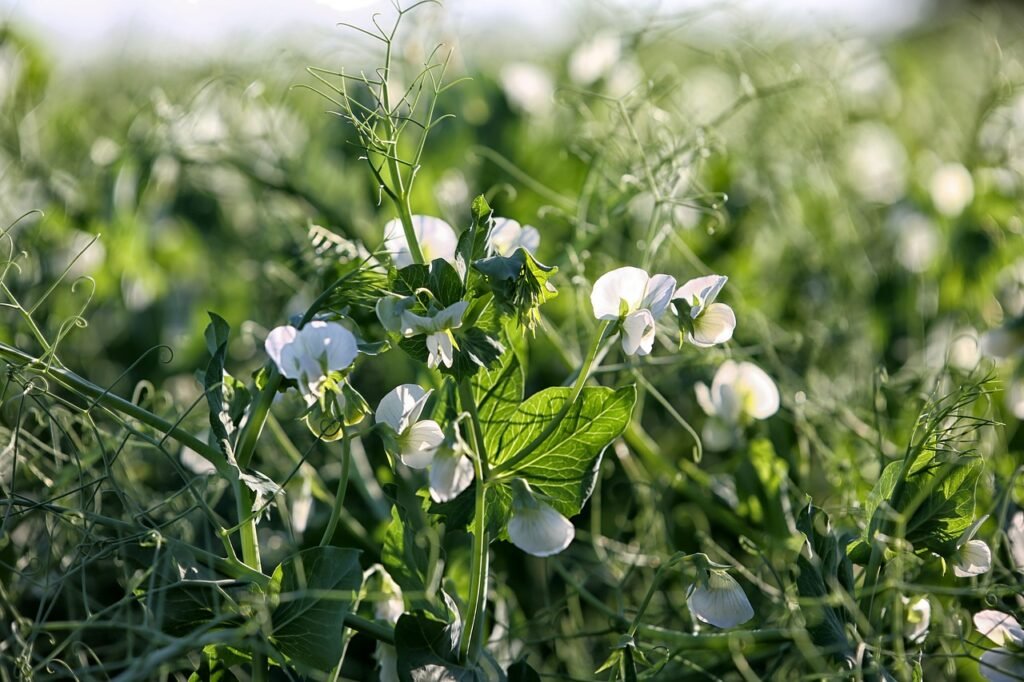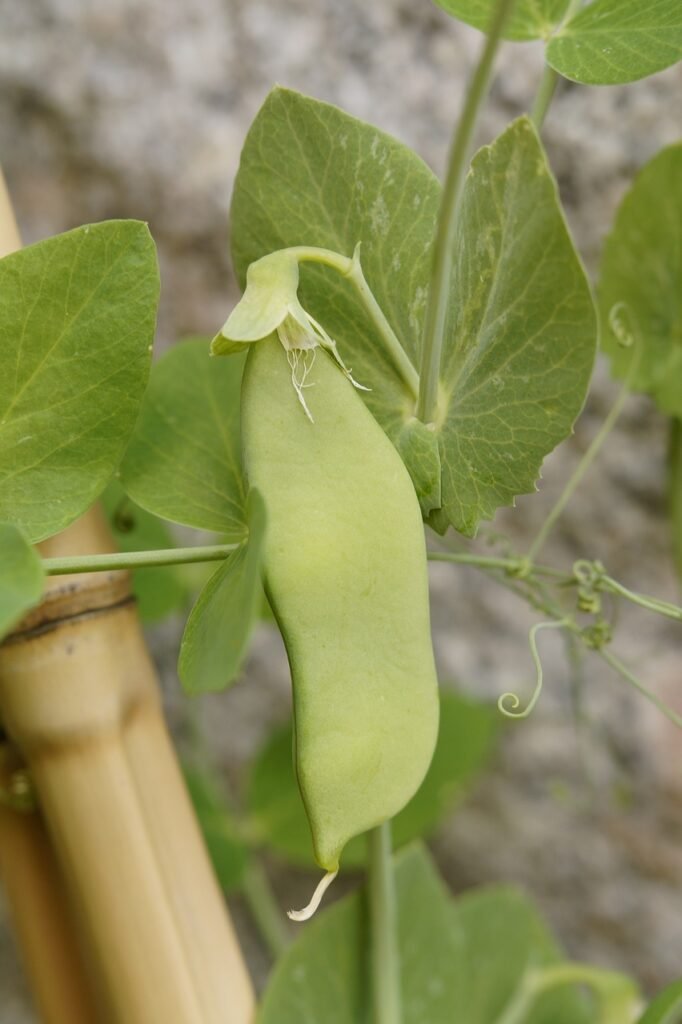
How to grow peas
Introduction to Growing Peas
Overview of Peas as a Nutritious Crop
Peas, those delightful little orbs of green goodness, are not just a tasty addition to your plate but also packed with nutrition. These humble legumes are rich in essential vitamins such as vitamin K, C, and A, as well as minerals like iron and manganese.
They are also a great source of dietary fiber and protein, making them a wholesome choice for your diet. Whether you prefer garden peas, snow peas, or sugar snap peas, each variety offers its unique nutritional profile that can benefit your overall health.
Benefits of Growing Peas in Home Gardens
Growing peas in your own backyard is not only rewarding but also brings a host of benefits to both you and the environment. By cultivating peas at home, you have access to fresh and organic produce right at your fingertips. This ensures that you consume peas at their peak freshness, maximizing their flavor and nutritional content.
Additionally, growing peas allows you to control the use of pesticides and chemicals on your crops, promoting a healthier lifestyle for you and your family. Furthermore, cultivating peas in your garden contributes to sustainability by reducing food miles and minimizing the carbon footprint associated with transporting produce from farm to table.
Selecting the Right Variety of Peas
When it comes to growing peas, selecting the right variety is crucial for a successful harvest. There are three main types of peas: shelling peas, snap peas, and snow peas.
Shelling peas are the traditional garden pea where you eat the sweet green peas inside. Snap peas have edible pods with mature peas inside, offering a crunchy and sweet taste.
Snow peas have flat, edible pods with immature peas inside and are commonly used in stir-fries. Consider your preference for flavor and intended use when choosing which type of pea to grow in your garden.
Choosing the Ideal Location for Planting
Peas thrive in cool weather but also require plenty of sunlight to grow properly. When selecting a location for planting your pea seeds, look for an area that receives at least 6 hours of sunlight per day. Additionally, make sure the soil is well-draining to prevent waterlogging, which can lead to root rot.
Peas prefer slightly acidic soil with a pH between 6.0 and 7.0. Consider planting them in an area where they can benefit from natural protection against strong winds to prevent damage to their delicate vines as they grow upwards.
Preparing the Soil for Planting
Before planting your pea seeds, it’s essential to prepare the soil properly to provide them with the nutrients they need to thrive. Start by loosening the soil using a garden fork or tiller to a depth of at least 6 inches. Remove any weeds or debris from the area to give your pea plants ample space to grow without competition for resources.
Incorporate organic matter such as compost or aged manure into the soil to improve its structure and fertility. This will help retain moisture and provide essential nutrients for healthy pea plant growth throughout their growing season.
Planting Peas

Sowing Seeds at the Correct Depth and Spacing
When it comes to planting peas, getting the depth and spacing just right is crucial for a successful harvest. Pea seeds should be planted about 1 to 1.5 inches deep in soil that is well-drained and rich in organic matter. If the soil is too compacted, the seeds may struggle to germinate properly.
Spacing is also key – plant your pea seeds about 2 inches apart in rows that are spaced around 18 to 24 inches apart. This allows enough room for the plants to grow without overcrowding each other.
Providing Adequate Water and Sunlight for Germination
Peas are sun-loving plants, so they need at least 6-8 hours of sunlight per day to thrive. When watering your pea plants, aim to keep the soil consistently moist but not waterlogged. Overwatering can lead to root rot, while underwatering can stunt growth and reduce yields.
During germination, it’s especially important to keep the soil evenly moist until you see those first delicate shoots emerging from the ground. A gentle watering once or twice a day should do the trick until your pea plants establish themselves.
Supporting Pea Plants with Trellises or Stakes

After planting your pea seeds and watching them sprout into delicate seedlings, it’s time to think about providing the necessary support for your growing plants. Peas are climbing vines that need something to latch onto as they reach for the sky.
One of the best ways to support your pea plants is by installing trellises or stakes in your garden. These structures not only help peas climb upwards but also keep the vines off the ground, reducing the risk of diseases and pests.
When setting up trellises or stakes for your pea plants, make sure they are sturdy and tall enough to accommodate the full height of your chosen pea variety. Position them in a way that allows easy access for tending to your plants and harvesting the peas later on.
As your pea plants grow, gently guide their tendrils towards the trellis or stake, helping them cling and climb naturally. This simple step can make a world of difference in ensuring healthy, productive pea plants in your garden.
Mulching to Retain Moisture and Suppress Weeds
Mulching is a gardening technique that involves covering the soil around your plants with a protective layer of material, such as straw, leaves, or compost. When it comes to growing peas, mulching serves multiple purposes that benefit both the plants and the overall health of your garden.
One key advantage of mulching around pea plants is moisture retention. Peas thrive in consistently moist soil, and mulch helps prevent water evaporation, ensuring that your plants stay hydrated during hot summer days.
Moreover, mulch acts as a natural barrier against weeds by blocking out sunlight and inhibiting weed growth around your pea plants. This not only saves you time from endless weeding sessions but also reduces competition for nutrients between weeds and peas.
Additionally, as organic mulch materials break down over time, they contribute valuable nutrients back into the soil, enriching it for future plantings. So don’t forget this simple yet effective step—mulch around your pea plants to promote healthy growth while keeping pesky weeds at bay.
Managing Pests and Diseases in Pea Plants
Identifying Common Pests that Attack Pea Plants
Peas, delicious as they are, can fall victim to various pests that can wreak havoc on your precious plants. One common pest to watch out for is the pea aphid. These tiny, soft-bodied insects love to suck the sap from pea plants, causing wilting and stunted growth.
Another pesky critter is the pea weevil, which lays its eggs on developing peas, leading to disfigured and damaged pods. Keep an eye out for caterpillars like the cabbage looper or cutworms as well, as they can munch through your pea leaves faster than you can say “pest control.”
Implementing Organic Pest Control Methods
When it comes to dealing with pests in your pea patch, you have options that don’t involve harsh chemicals. One effective method is introducing beneficial insects like ladybugs or lacewings that prey on aphids and other harmful pests. You can also try companion planting by growing aromatic herbs like mint or basil near your peas to repel unwanted insect visitors.
For a natural pesticide spray, mix a solution of water and neem oil or garlic oil to deter pests without harming your plants or the environment. Remember, nature has its own way of maintaining balance – so why not work with it in harmony?
Harvesting and Storing Peas

Knowing When to Harvest Your Peas
When it comes to harvesting peas, timing is everything. You want to pick your peas at the peak of their sweetness and tenderness before they become starchy and lose their flavor. Most varieties of peas are ready for harvest about 60-70 days after planting, but always refer to the specific guidelines for the type you’re growing.
One way to tell if your peas are ready is by gently squeezing the pods – if they feel plump and firm, it’s likely time to start harvesting. Another indicator that your peas are ripe for picking is when the pods have filled out fully but are still bright green in color.
Avoid waiting too long to harvest as overripe peas can be tough and lack flavor. It’s best to pick your peas in the morning when they’re at their crispest, as heat can cause them to lose moisture throughout the day.
Tips on Properly Storing Freshly Harvested Peas
Freshly harvested peas are a delight, but proper storage is key to preserving their flavor and texture. To extend the shelf life of your peas, it’s essential to store them in a cool place away from direct sunlight. For short-term storage, you can keep unwashed pea pods in a perforated plastic bag in the refrigerator crisper drawer for up to 5 days.
If you have an abundance of peas or want them to last longer, consider blanching them before freezing. Blanching helps retain their color, texture, and taste.
To blanch fresh peas, simply boil them for 1-2 minutes then transfer them into an ice water bath before draining and freezing in airtight containers or freezer bags. Properly stored frozen peas can last up to 8-12 months without losing much of their nutritional value or taste. For a full article on preserving you peas click here.
Fun Facts about Growing Peas
The Different Types of Edible Podded-Peas
Did you know that there are different types of edible-podded peas beyond the typical green garden pea? Snow peas, also known as Chinese pea pods, have flat edible pods and are often used in stir-fries for their crisp texture.
Sugar snap peas, on the other hand, have plump pods with both edible peas and pod walls, providing a delightful crunch in salads or enjoyed as a snack. These variations offer a range of flavors and textures to explore in your culinary adventures with peas.
The History of Cultivating Green Garden Peas
Peas have a rich history dating back thousands of years. Green garden peas, specifically Pisum sativum var. sativum, have been cultivated since ancient times in regions like the Middle East and Mediterranean.
They were popularized in Europe during the 16th century and became a staple crop due to their versatility and nutritional value. The humble green pea has even been mentioned in historical texts and folklore, showcasing its significance throughout different cultures across the globe.
Conclusion
Growing peas is not just about nurturing a vegetable plant; it’s about connecting with nature’s bounty and savoring the traditions that come with cultivating this beloved crop. Whether you’re exploring the diverse world of edible-podded peas or delving into the historical roots of green garden peas, each aspect reveals layers of fascination waiting to be uncovered in your gardening journey. Embrace the joy of tending to your pea plants and relish in the satisfaction of harvesting your own fresh produce straight from your garden.
Let each pea harvested symbolize growth, resilience, and the simple pleasures found in nature’s embrace. Happy gardening!




